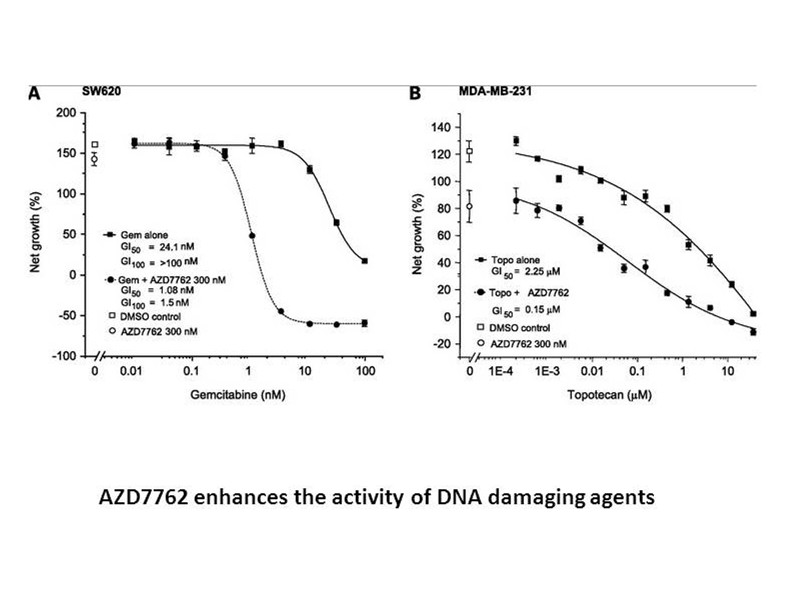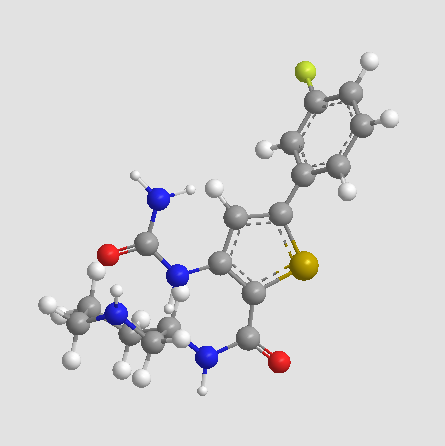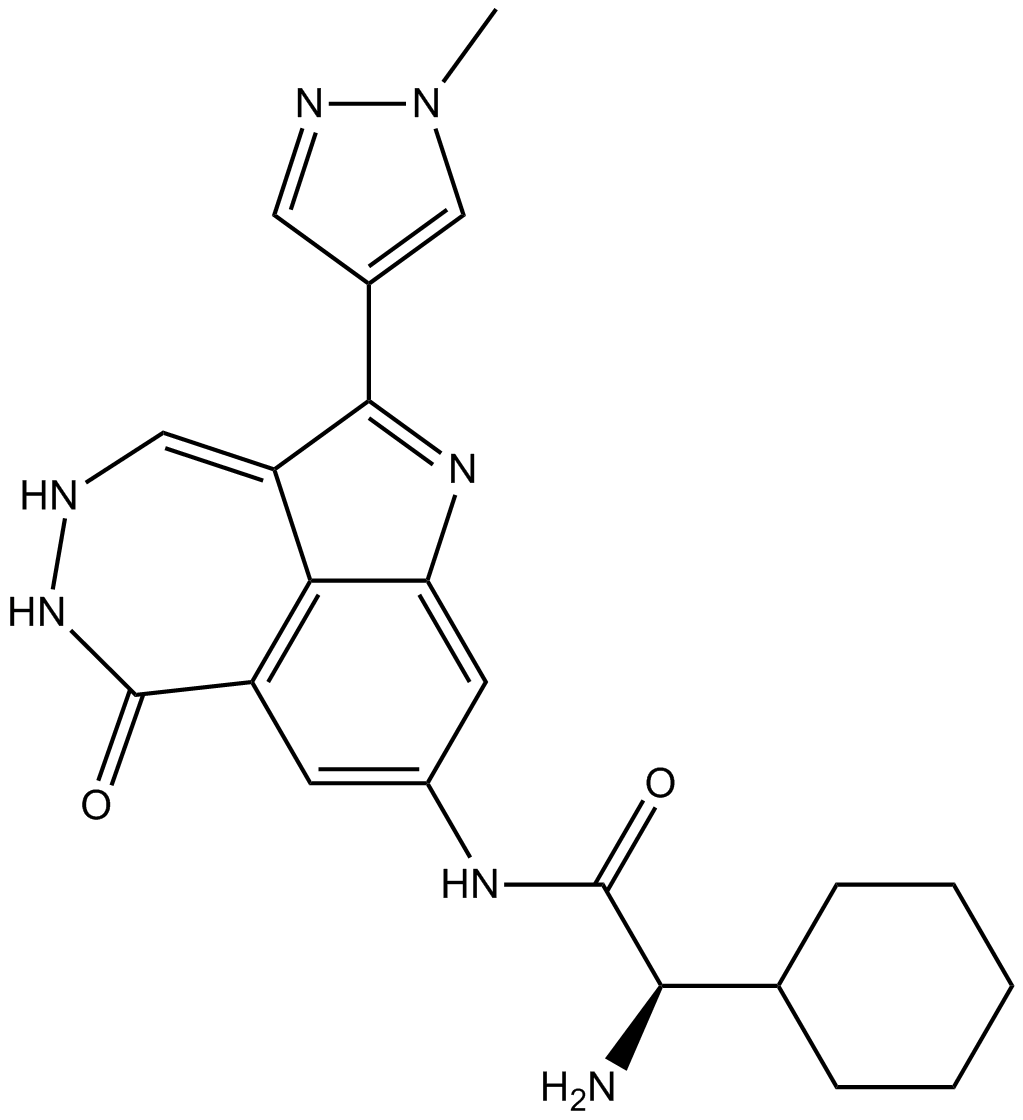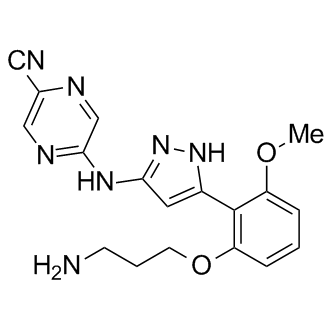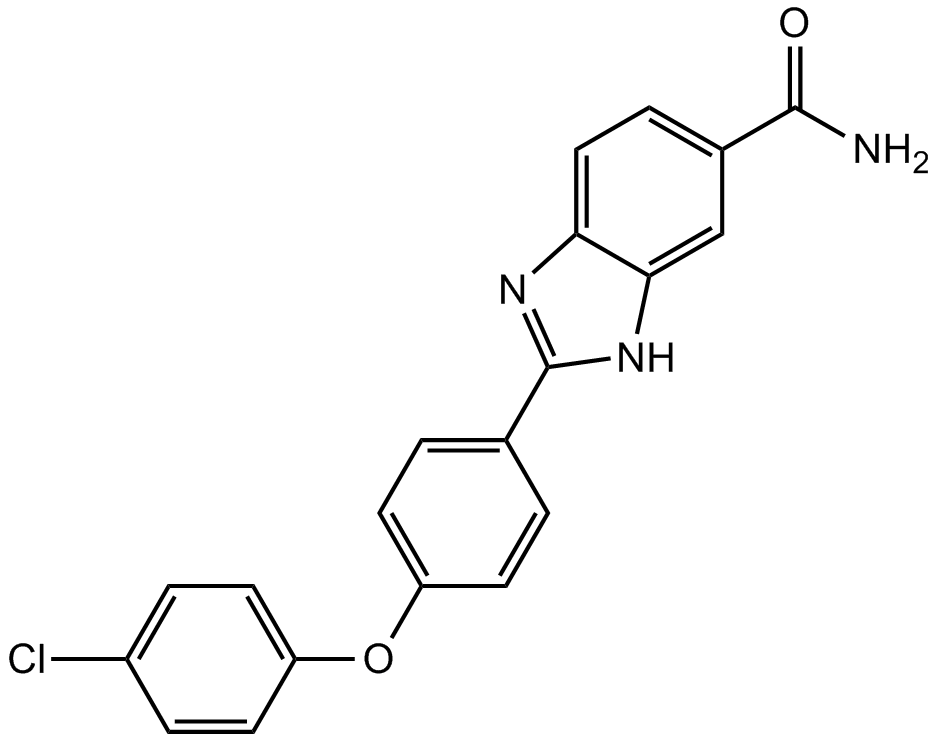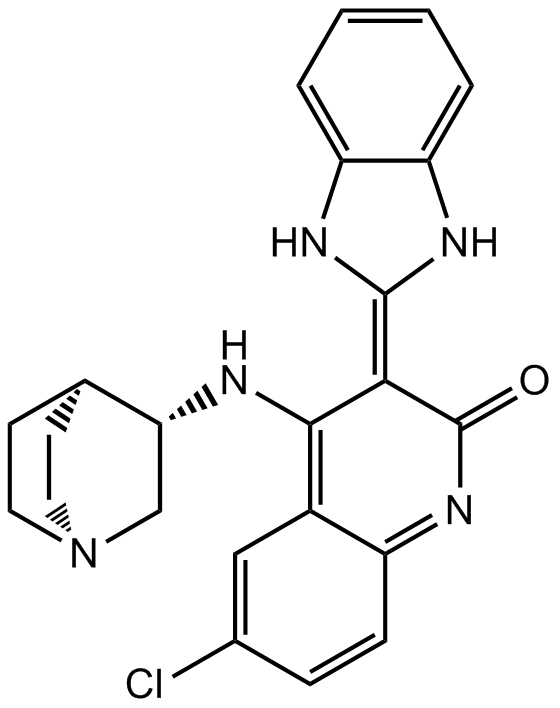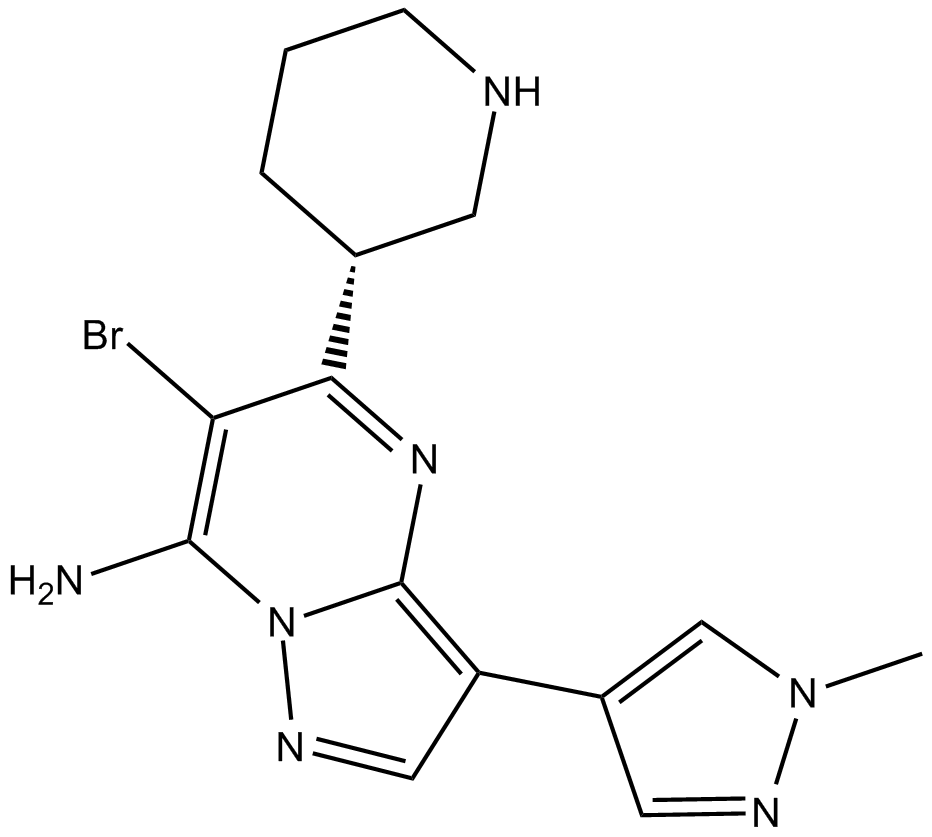AZD7762
AZD7762 (CAS No. 860352-01-8) is an ATP-competitive inhibitor targeting the checkpoint kinases Chk1 and Chk2, regulatory enzymes activated upon DNA damage that control cell-cycle progression through phosphorylation of CDC25 phosphatases. By competitively binding the ATP-binding pocket of Chk1, AZD7762 blocks Chk1-mediated phosphorylation of CDC25C, exhibiting an IC50 of approximately 5 nM and Ki of 3.6 nM. This inhibition prevents DNA damage-induced cell cycle arrest and interrupts DNA repair mechanisms, promoting apoptosis in tumor cells. Consequently, AZD7762 acts as a chemosensitizing agent, enhancing the cytotoxic effects of DNA-damaging therapies in oncology research.
| Physical Appearance | A solid |
| Storage | Store at -20°C |
| M.Wt | 362.42 |
| Cas No. | 860352-01-8 |
| Formula | C17H19FN4O2S |
| Solubility | insoluble in H2O; insoluble in EtOH; ≥18.1 mg/mL in DMSO |
| Chemical Name | 3-(carbamoylamino)-5-(3-fluorophenyl)-N-[(3S)-piperidin-3-yl]thiophene-2-carboxamide |
| SDF | Download SDF |
| Canonical SMILES | NC(Nc1c(C(N[C@@H]2CNCCC2)=O)[s]c(-c2cc(F)ccc2)c1)=O |
| Shipping Condition | Small Molecules with Blue Ice, Modified Nucleotides with Dry Ice. |
| General tips | We do not recommend long-term storage for the solution, please use it up soon. |
| Cell experiment: [1] | |
|
Cell lines |
T47D and MCF7 cells |
|
Preparation method |
The solubility of this compound in DMSO is >10 mM. General tips for obtaining a higher concentration: Please warm the tube at 37 °C for 10 minutes and/or shake it in the ultrasonic bath for a while.Stock solution can be stored below -20°C for several months. |
|
Reaction Conditions |
100 nM, 24 hours |
|
Applications |
A clearly enhanced radiosensitization of AZD7762 was observed in the p53 mutant T47D cells but not in the wild-type p53 MCF7 cells. In the p53 mutant T47D cells, the cytotoxicity produced by AZD7762 in combination with radiation was significantly greater than that caused by the radiation alone. In the wild-type p53 MCF7 cells, although there was a trend for AZD7762 to sensitize cells to radiation, this difference did not reach a statistical significance. |
| Animal experiment: [2] | |
|
Animal models |
Female athymic nude mice injected with HT-29 cells |
|
Dosage form |
Intraperitoneal injection, 25 mg/kg, given immediately after radiation treatment and 8 hours later |
|
Applications |
AZD7762 treatment alone had little effect on tumor growth, whereas fractionated radiation delayed tumor growth. The time for tumors to reach thrice the initially measured tumor volume relative to the control for AZD7762 alone, fractionated radiation, and AZD7762 plus fractionated radiation was 2.3 (P < 0.53), 7.4 (P < 0.07), and 18.7 (P < 0.00014) days, respectively. Relative to fractionated radiation alone, the combination of AZD7762 and fractionated radiation was also highly significant. Thus, the combination of AZD7762 and fractionated radiation showed a greater tumor growth delay than the sum of the individual treatments alone. |
|
Other notes |
Please test the solubility of all compounds indoor, and the actual solubility may slightly differ with the theoretical value. This is caused by an experimental system error and it is normal. |
|
References: [1] Ma Z, Yao G, Zhou B, et al. The Chk1 inhibitor AZD7762 sensitises p53 mutant breast cancer cells to radiation in vitro and in vivo. Molecular medicine reports, 2012, 6(4): 897-903. [2] Mitchell J B, Choudhuri R, Fabre K, et al. In vitro and in vivo radiation sensitization of human tumor cells by a novel checkpoint kinase inhibitor, AZD7762. Clinical Cancer Research, 2010, 16(7): 2076-2084. |
|
| Description | AZD7762 is a potent and selective inhibitor of Chk1 with IC50 of 5 nM. | |||||
| Targets | CHK1 | CHK2 | ||||
| IC50 | 5 nM | <10 nM | ||||
Quality Control & MSDS
- View current batch:
Chemical structure
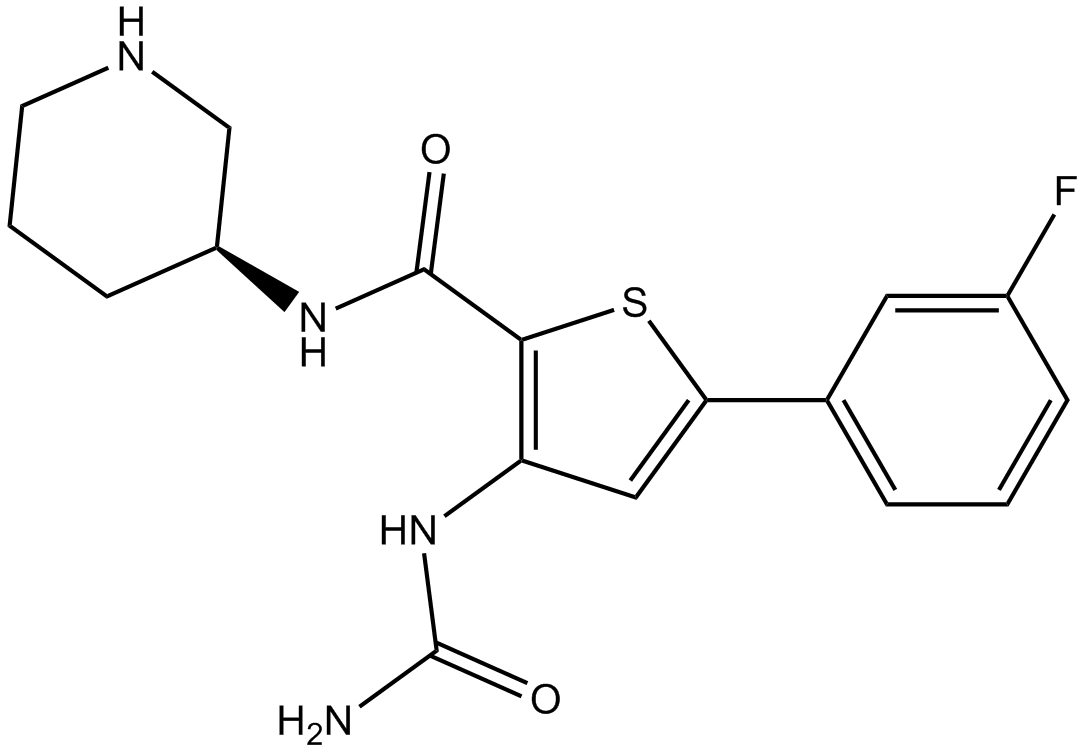
Related Biological Data
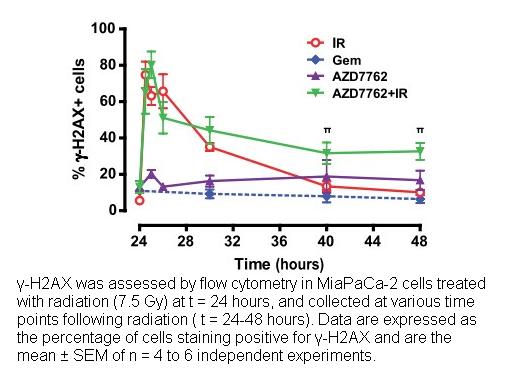
Related Biological Data
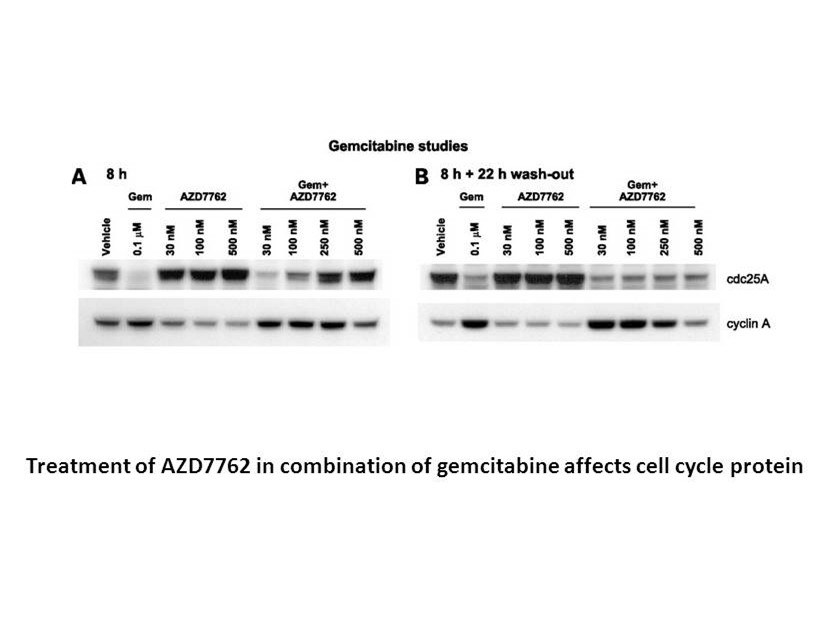
Related Biological Data
